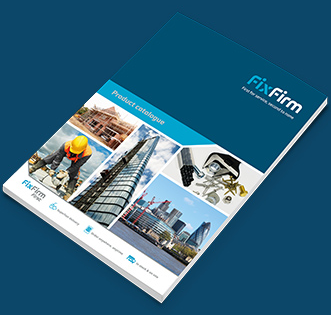When it comes to construction, engineering, mechanical, and electrical work, safety should always be a top priority. Creating a safe work environment is essential for protecting your workforce, ensuring their well-being, and maintaining productivity. One crucial aspect of ensuring workplace safety is providing appropriate personal protective equipment (PPE), and one essential aspect of PPE that plays a vital role in workplace safety is the humble safety boot.
In this guide, we will explore what safety boots are, how they are categorized, the different levels of protection available, and how to choose the correct safety boots for your specific line of work. Additionally, we will delve into safety boot PPE regulations and showcase how FixFirm, the leading national supplier of construction, engineering, mechanical, and electrical products, can assist you in finding the ideal safety boots for your industry's needs.
What Are Safety Boots?
Safety boots, also known as work boots or safety shoes, are purpose-built footwear designed to provide protection and support to the feet and ankles in hazardous work environments. They are an integral part of personal protective equipment (PPE) and play a crucial role in minimizing the risk of injuries caused by various workplace hazards.
Safety boots are constructed with durability, comfort, and safety in mind. They are engineered to meet specific safety standards and regulations, ensuring that workers are adequately protected while performing their duties. These boots are not only designed to withstand the demands of rugged work conditions but also provide essential features to mitigate potential risks.
Categorization of Safety Boots
Safety boots are categorized into different classes, each denoting a specific level of protection and suitability for various working conditions. Understanding these categories is crucial when selecting the most appropriate safety boots for your industry and job requirements
- Safety-Toe Boots: Safety-toe boots are the most widely recognized type of safety footwear. They are equipped with a reinforced toe cap made of materials such as steel, composite alloys, or aluminium. The purpose of the safety toe cap is to protect the toes from potential impact and compression hazards.
- Metatarsal Boots: Metatarsal boots provide additional protection for the metatarsal bones, which are in the midfoot region. These boots feature an extended metatarsal guard that covers the vulnerable area above the toes. The metatarsal guard shields against impact hazards from heavy objects and provides added protection against compression injuries caused by machinery or equipment.
- Electrical Hazard (EH) Boots: Electrical hazard boots are specifically designed to protect workers from electrical shocks and electrical hazards. These boots are constructed with insulating materials that impede the flow of electrical current, reducing the risk of electric shock. EH boots are essential for any workers exposed to live electrical circuits or equipment.
- Puncture-Resistant (PR) Boots: Puncture-resistant boots are engineered with a metal or composite plate embedded in the sole of the boot. This plate acts as a protective barrier, preventing sharp objects like nails, glass shards, or metal fragments from penetrating the sole and causing injuries to the foot.
- Slip-Resistant Boots: Slip-resistant boots are designed to provide excellent traction on slippery surfaces, reducing the risk of slips, trips, and falls. These boots feature specially designed outsoles with tread patterns, compounds, or materials that enhance grip and stability.
- Chemical-Resistant Boots: Chemical-resistant boots are constructed with materials that offer protection against various chemicals, acids, and corrosive substances. These boots create a barrier between the worker's feet and hazardous chemicals, reducing the risk of chemical burns or absorption through the skin.
Choosing the Correct Safety Boots
Selecting the correct safety boots is crucial to ensure optimal protection, comfort, and performance for workers in various industries. Consider the following factors when choosing safety boots for your specific line of work:
- Assess the Hazards: Identify the specific hazards present in your workplace. Consider the types of risks workers may encounter, such as falling objects, slippery surfaces, electrical hazards, or puncture risks. Understanding these hazards will help you determine the appropriate safety features and certifications required in your safety boots.
- Determine Required Safety Features: Based on the identified hazards, determine the specific safety features needed in your safety boots. For example, if there is a risk of heavy objects falling or rolling, safety-toe boots with impact and compression protection are essential. By matching the safety features to the hazards, you ensure the boots offer the right level of protection.
- Consider Comfort and Fit: Comfort and fit are essential for safety boots. Ill-fitting boots can cause discomfort, fatigue, and even contribute to accidents. Look for boots that provide a snug yet comfortable fit, with ample room for toe movement. Consider features like padded collars, cushioned insoles, and breathable materials to enhance comfort.
- Choose Appropriate Materials: Safety boots are available in various materials, including leather, synthetic materials, and rubber compounds. Consider the demands of your work environment and choose boots made from materials that can withstand those conditions. Evaluate the pros and cons of each material and select accordingly.
- Evaluate Sole and Traction: The sole of the safety boots plays a crucial role in preventing slips, trips, and falls. Look for boots with slip-resistant outsoles that provide excellent traction on different surfaces, including wet or oily floors. The outsole should have patterns or materials that effectively grip the ground, reducing the risk of accidents.
- Consider Additional Features: Depending on your industry and specific needs, there may be additional features to consider. These can include waterproofing for working in wet conditions, insulation for cold environments, anti-fatigue properties for long hours on your feet, or antimicrobial treatments to prevent odour and bacterial growth. Assess these features based on your work requirements.
Safety Boot PPE Regulations
In the United Kingdom, safety boots are considered PPE and are subject to specific regulations to ensure their effectiveness in protecting workers from workplace hazards. Compliance with these regulations is essential to maintain a safe and legally compliant work environment.
- Health and Safety Executive (HSE) Guidance: HSE is the regulatory body responsible for enforcing health and safety regulations in the UK. The HSE provides comprehensive guidance on the selection, use, and maintenance of PPE, including safety boots.
- UKCA Marking: Safety boots that comply with the applicable European Union (EU) legislation must carry the CE marking. The UKCA mark indicates that the boots meet specific health, safety, and environmental protection standards. [TH1]
- BS EN ISO 20345 Standard: The British Standard (BS) EN ISO 20345 is the primary standard governing safety footwear in the UK. This standard outlines the minimum requirements and testing methods for safety boots. It covers various aspects, including impact resistance, compression resistance, slip resistance, and more. Safety boots complying with BS EN ISO 20345 provide a baseline level of protection against common workplace hazards.
- Categorization and Safety Levels: Safety boots are categorized into different levels based on their protective features. These categories include SB, S1, S2, S3, and more. Each level represents a set of minimum requirements for the boots to meet. It is important to select safety boots that align with the specific requirements of the job role and workplace hazards.
- Risk Assessment: Employers are responsible for conducting risk assessments in the workplace to identify potential hazards and determine the necessary PPE, including safety boots. The risk assessment process helps in evaluating the severity of hazards and selecting the appropriate level of protection for workers.
How FixFirm Can Help
As a national supplier of PPE and safety footwear, [TH2] FixFirm offers an extensive range of safety boots that comply with the highest industry standards. FixFirm's safety boot collection includes a wide range of styles and brands, offering various protective features, such as steel toes, metatarsal guards, electrical hazard resistance, and puncture-resistant soles. Their comprehensive product range ensures that you can find the perfect safety boots to match your specific requirements.
At Fix Firm, we are committed to providing businesses with the products and services they need to stay ahead of the curve in the construction industry. With our cutting-edge technologies like SlickStock and ProcureSite, we are helping businesses to optimise their inventory, streamline their procurement processes, and stay on top of the latest trends and innovations.
You can view our entire range of safety footwear by clicking HERE.
To find out more about us, or to get in touch, please CLICK HERE.
BACK TO ARTICLES

